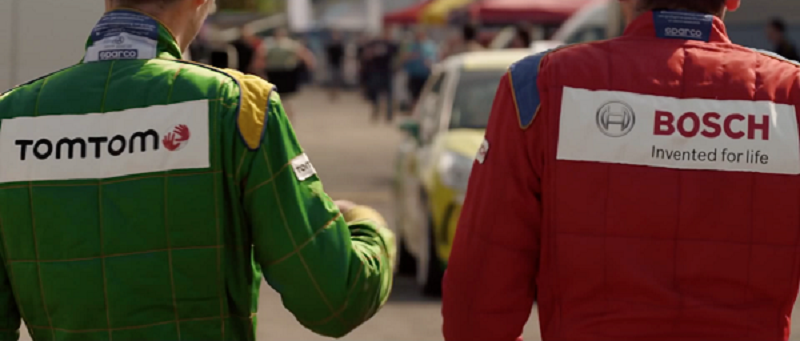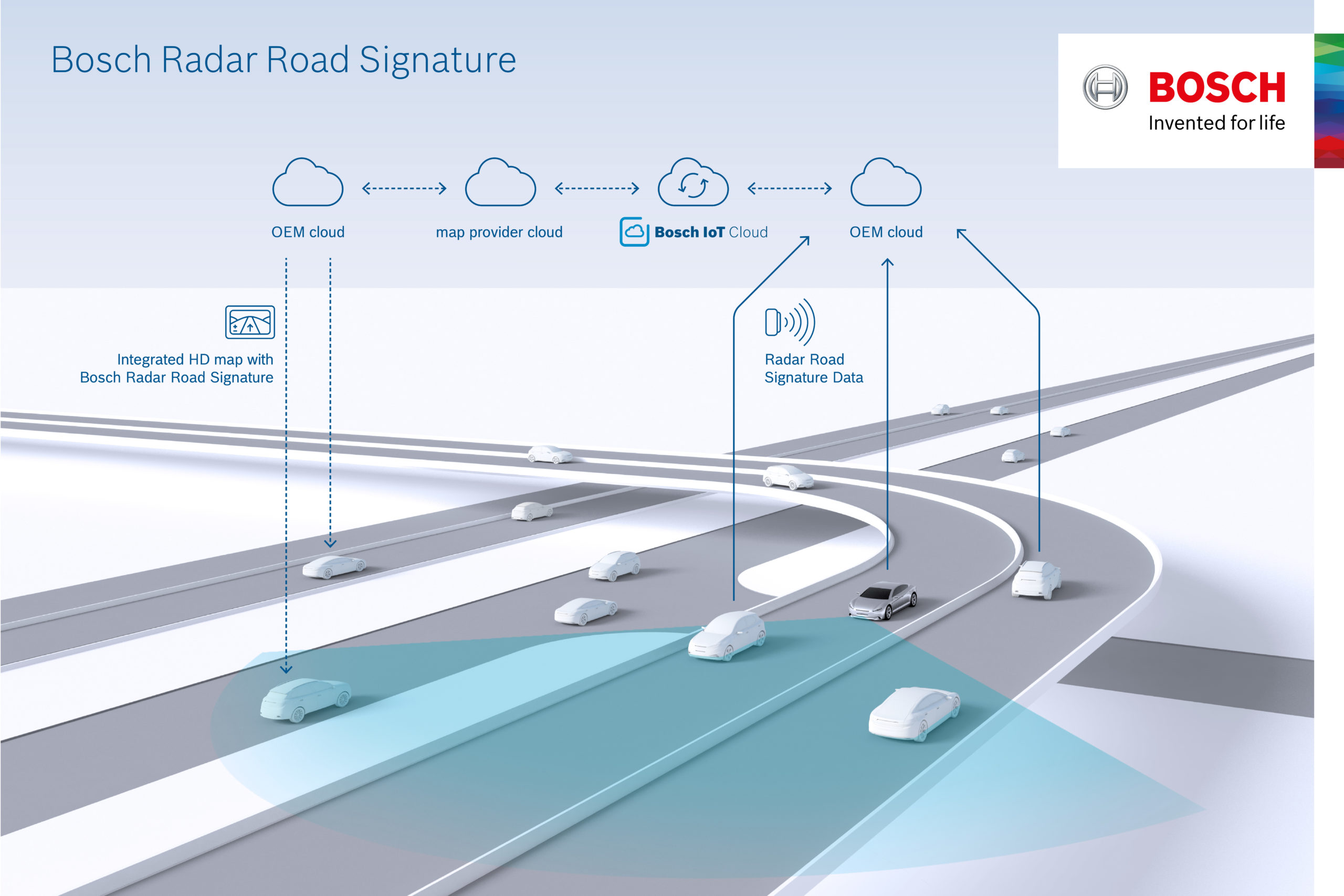
Bosch creates Radar road signature maps for autonomous driving
Bosch is teaming up with TomTom to use Radar data in an area where it was previously not utilized – creating HD maps for autonomous driving! Bosch’s Radar Road Signature map is going to serve as an additional localization layer for autonomous driving, enabling autonomous cars to locate themselves in the 3D space with centimeter-level accuracy.

Bosch and TomTom have been working together since 2015
Radar Localization Layer For Autonomous Driving
Radar sensors are currently used in Advanced Driver Assistance Systems (ADAS) for detecting moving objects and their relative distance to the car. Bosch is the first company to use Radar data as a localization layer.
Bosch’s radar road signature is made up of billions of individual points where radar signals hit and reflected, which helps create a unique map layer that can be used for centimeter level localization. It might be interesting to see if the signal strength of the reflected signal is being used..
Does the Radar Road signature map also include the signal strength of the reflected signal? Is that information used somehow?
— Geoawesomeness (@geoawesomeness) June 7, 2017
Usually, sensors in the visible specturm sensors are used for creating the localization layer for autonomous navigation. Of course, Radar has a big advantage that it works in inclement weather and in dark conditions unlike visible light sensors (LIDAR vs Radar). Another interesting advantage is data volume. Bosch claims that the Radar road signature map transmits only 5 Kbytes / Kilometer to the cloud which is supposedly half of what a video sensor would transmit. (Related: Massive Autonomous Vehicle Sensor Data – What does it mean?).
We’ve been working hard to create the HD Map needed for autonomous driving, including localisation attributes such as TomTom’s RoadDNA. It’s exciting to be launching this additional localisation layer with Bosch in the form of the Radar Road Signature – that greatly increases the robustness of localisation under all circumstances. – Harold Goddijn, CEO of TomTom
Wait, is Tesla using Radar for Locationalization
Given that Elon Musk has been a long time champion of Radar in the “Radar vs LIDAR” debate, its hightly possible that Tesla has similar plans for radar based localization in their Autopilot software. Let’s see what Elon has to say 😉
Hi @elonmusk would love to hear your thoughts on this! Is Tesla planning to use Radar for localization? https://t.co/U0tMaepOCJ
— Geoawesomeness (@geoawesomeness) June 7, 2017









